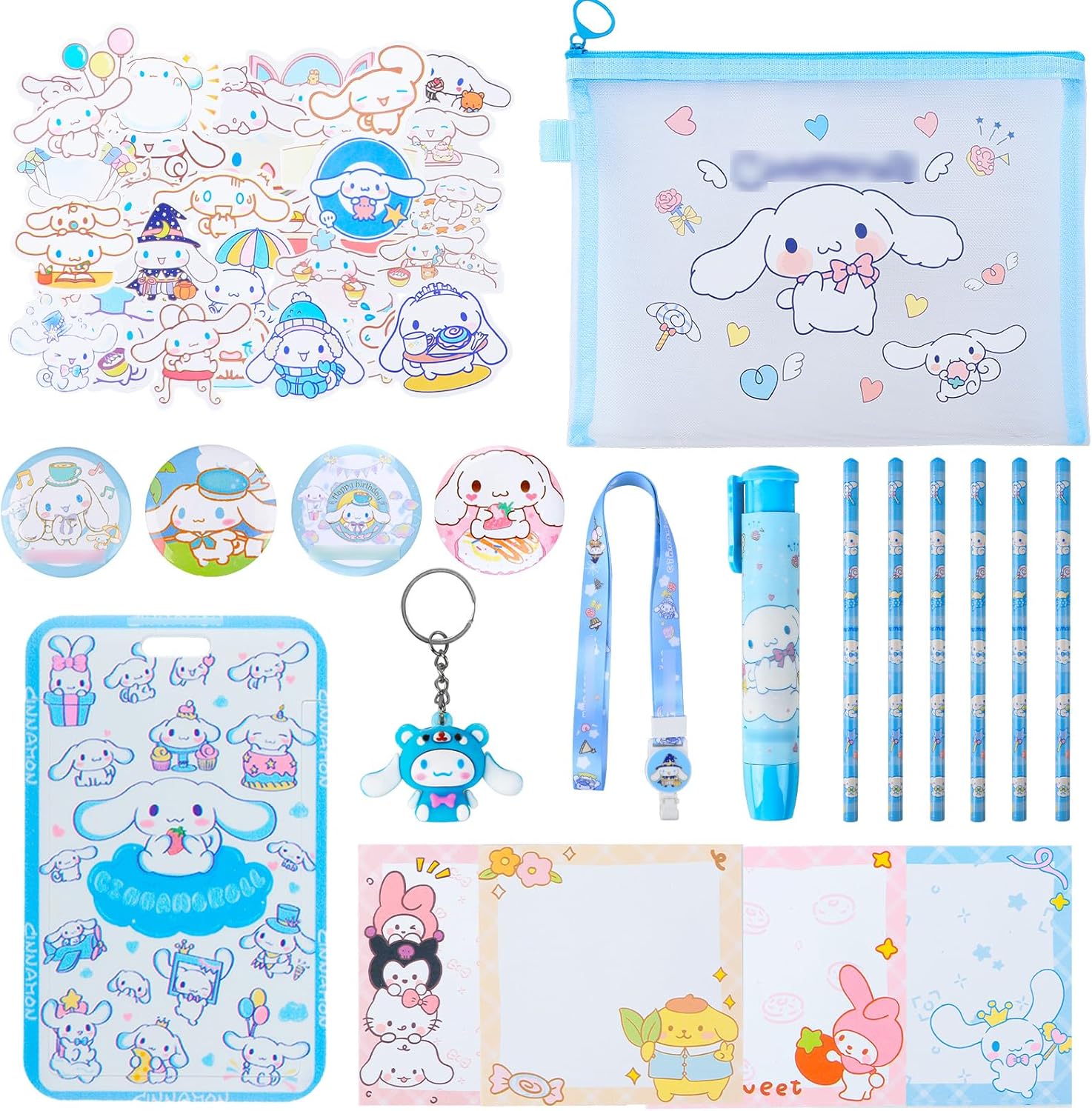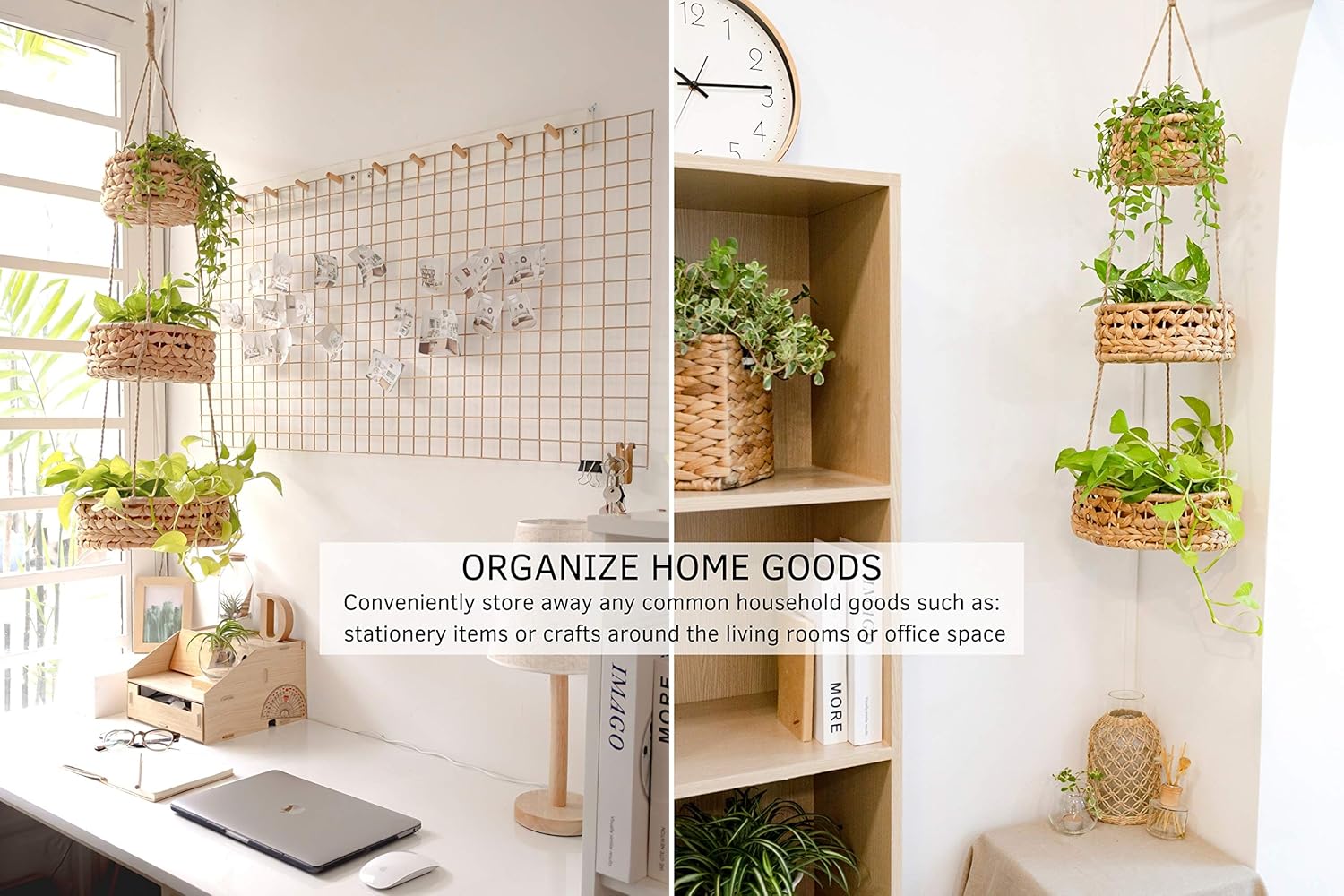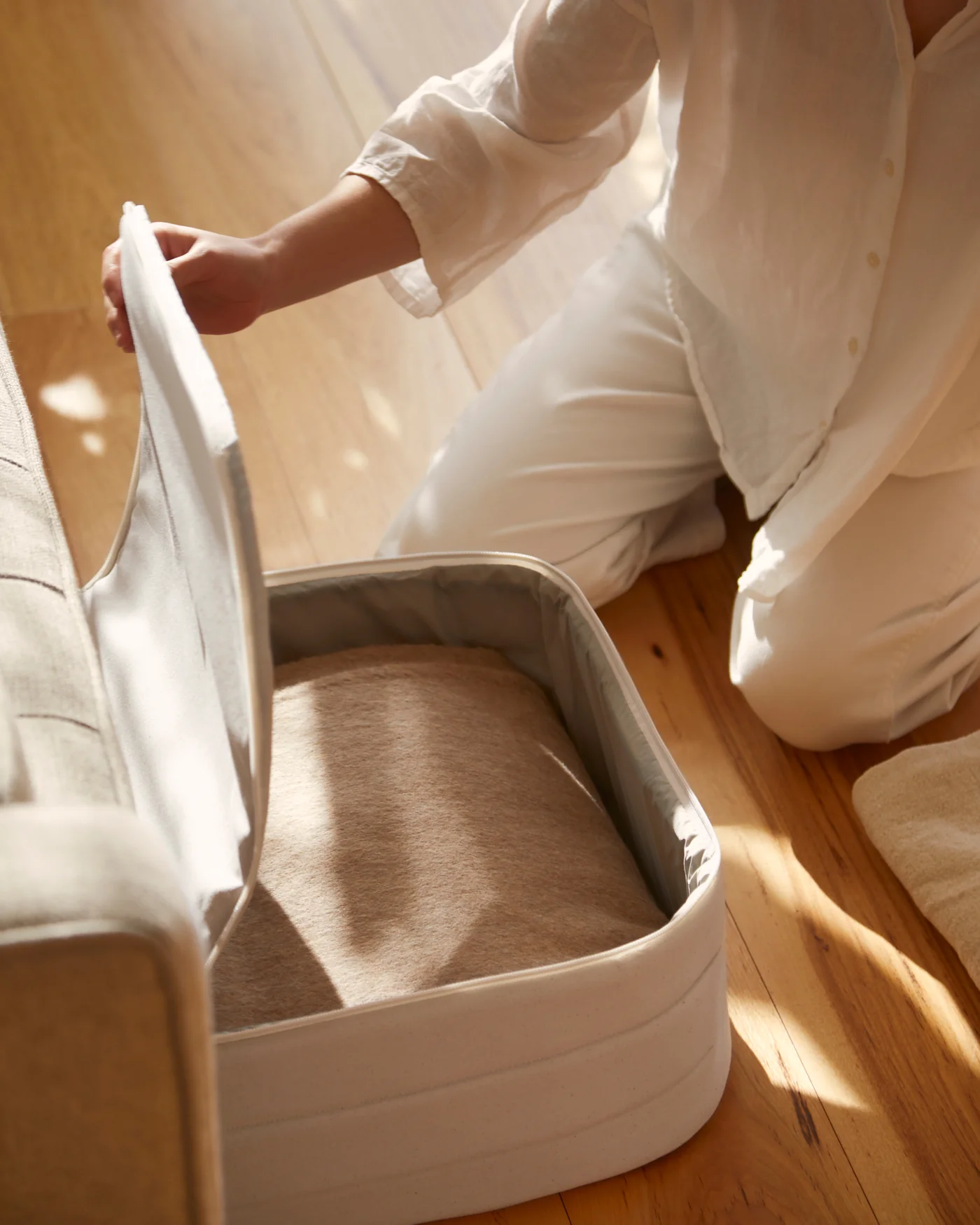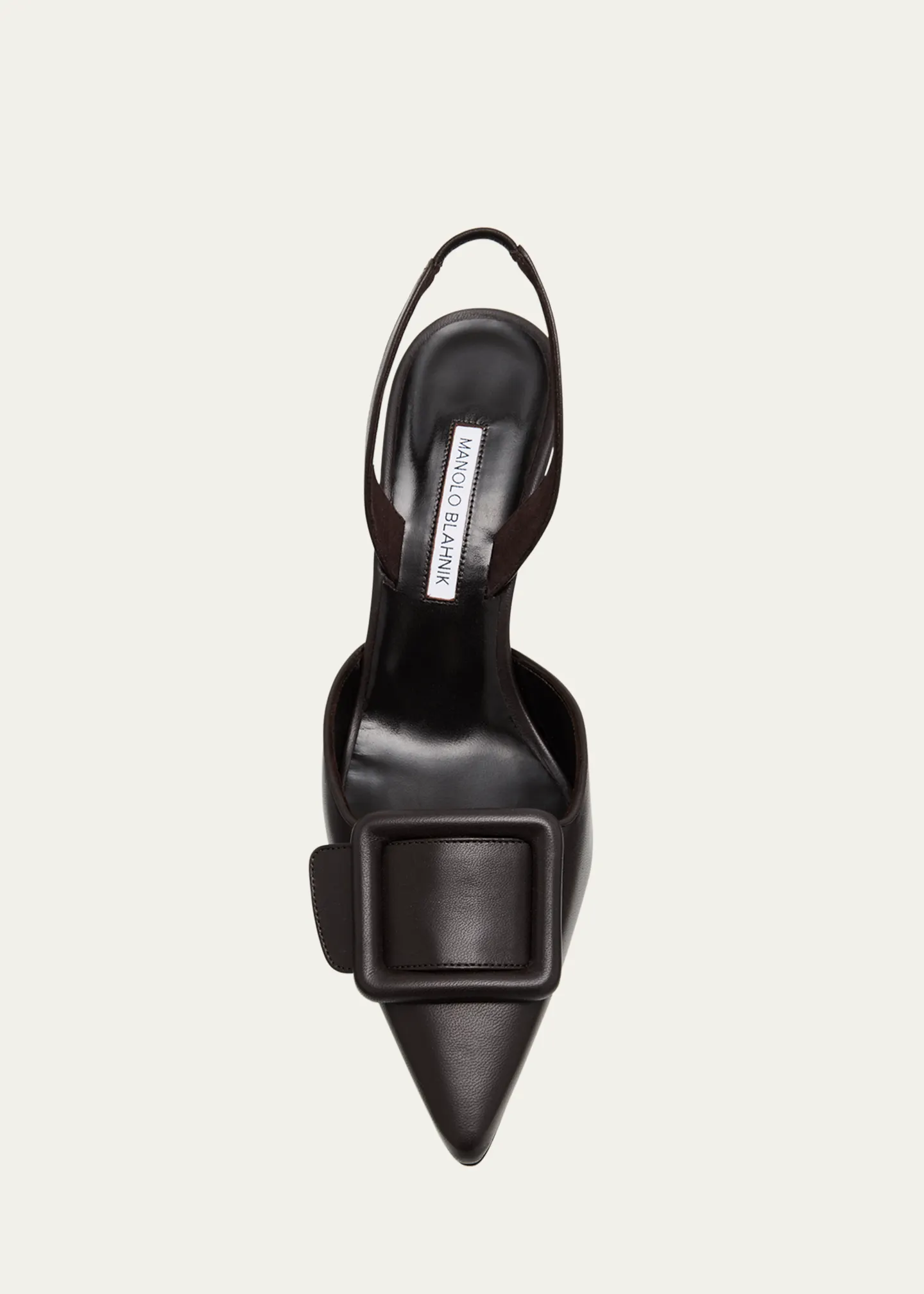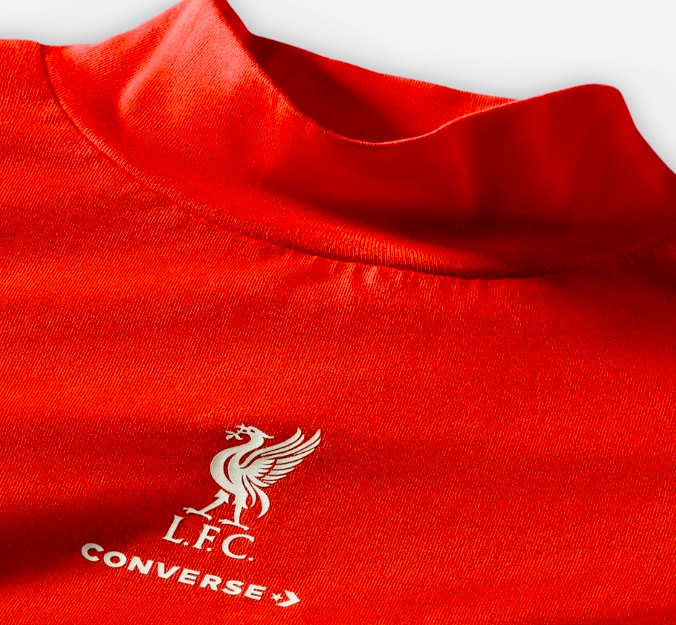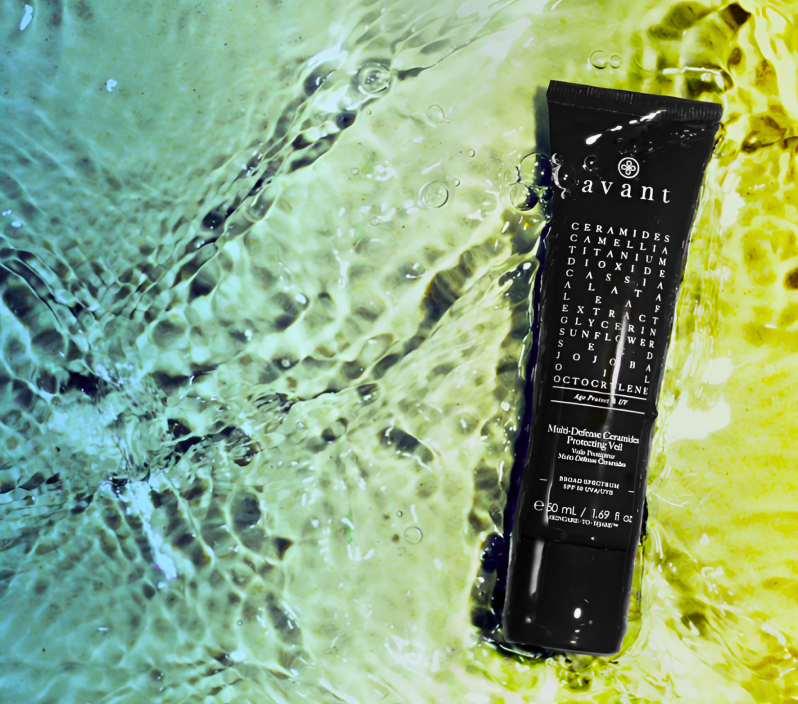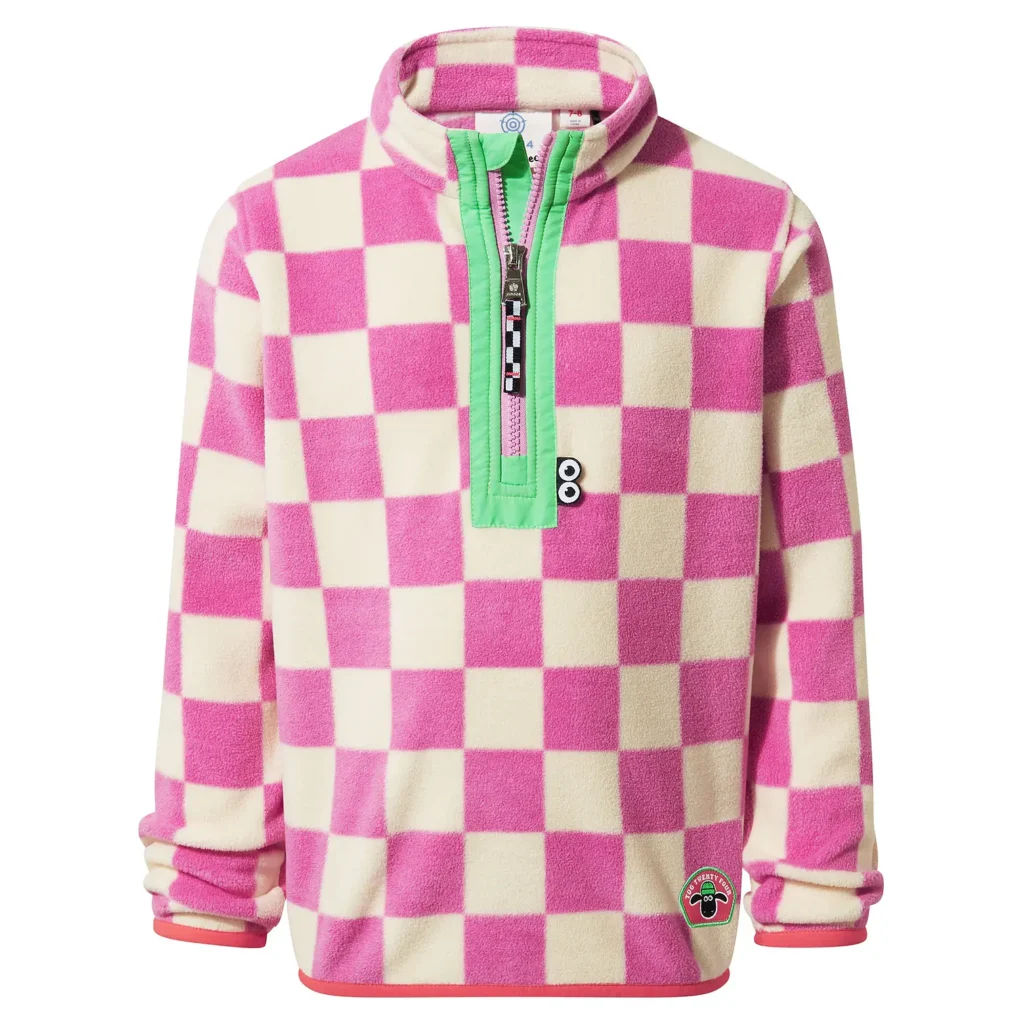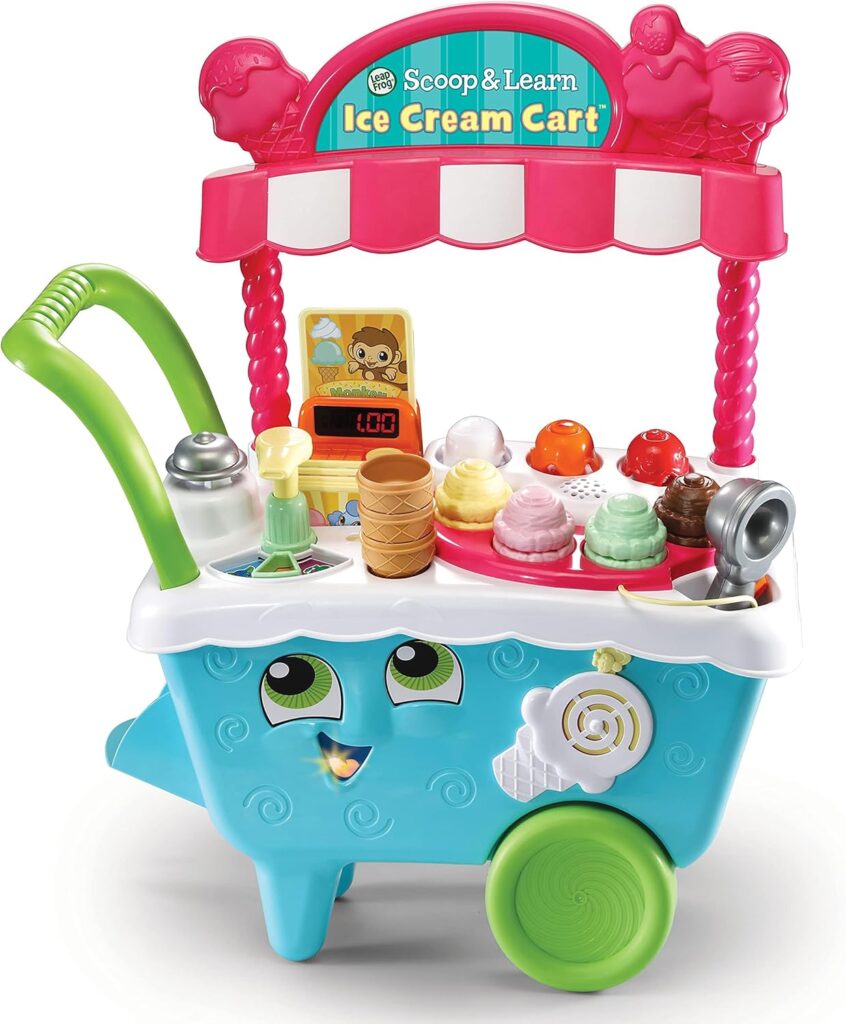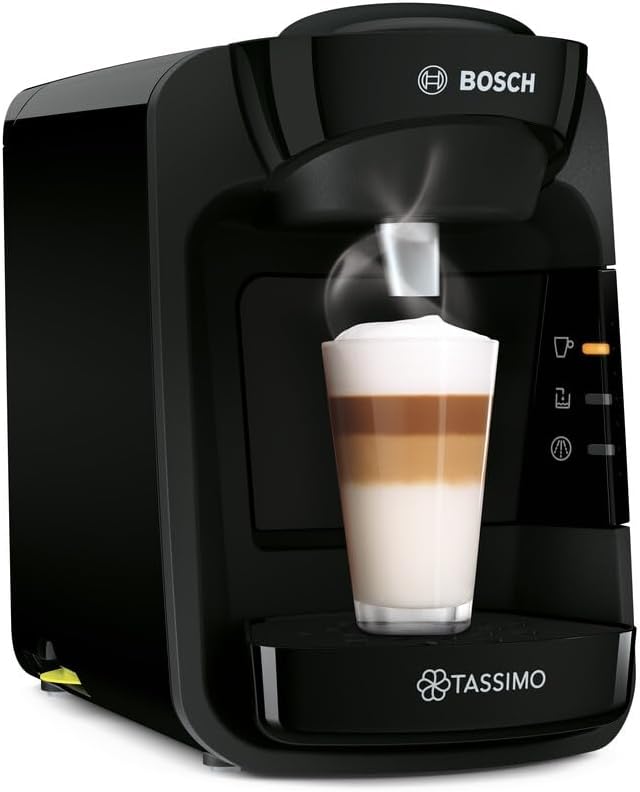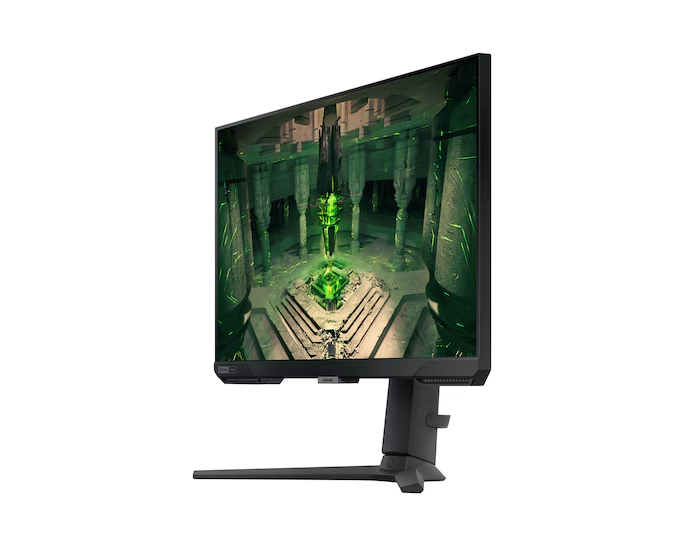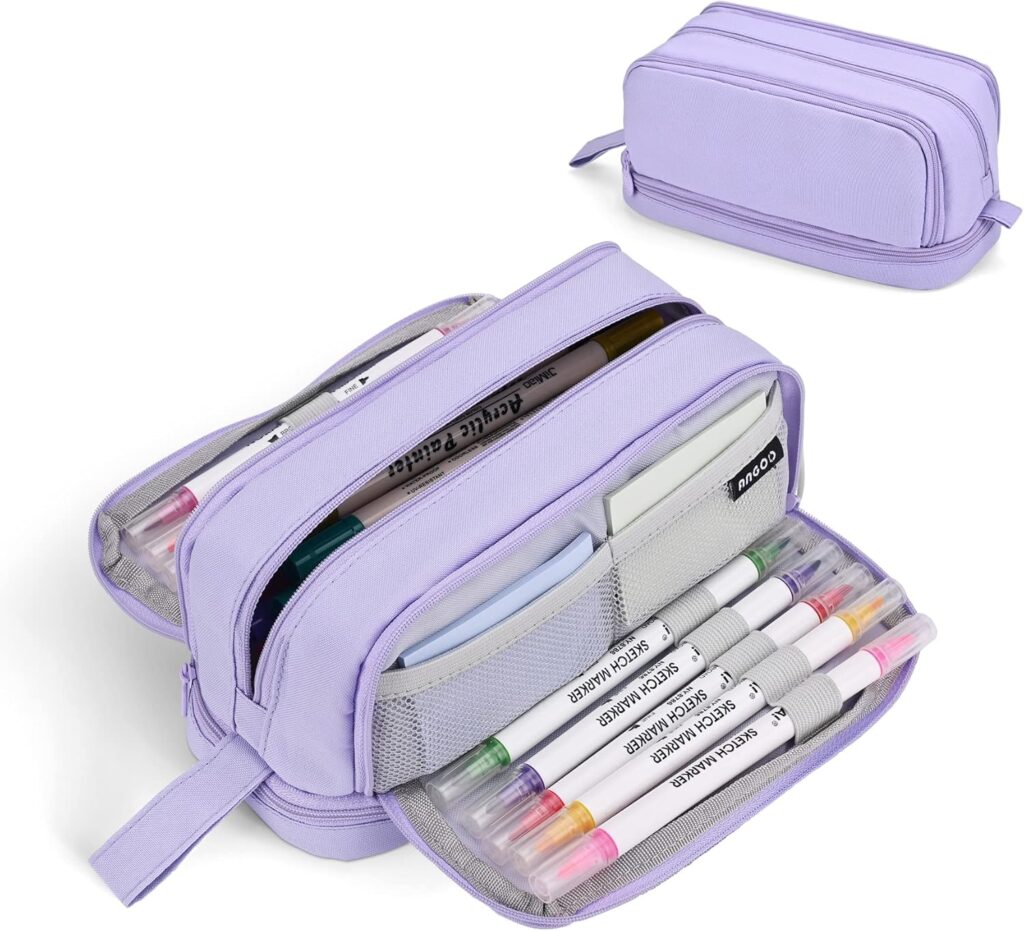When stationery is fun, kids actually reach for it—homework gets started sooner, notes get clearer, and the backpack finally stays tidy. In this article, we’ll build a practical, age-appropriate study kit that balances function and delight. We’ll cover how to structure a pencil pouch for fast access, choose kid-safe materials, motivate with reward stickers, and keep the whole system organized week after week—using the Cute School Supplies Set as our all-in-one anchor.
In this article, you’ll learn how to map tools to real school tasks (reading logs, math practice, projects), how color and character design can support attention rather than distract, and how to create simple rituals that turn study time from “ugh” to “ok, let’s do this.”
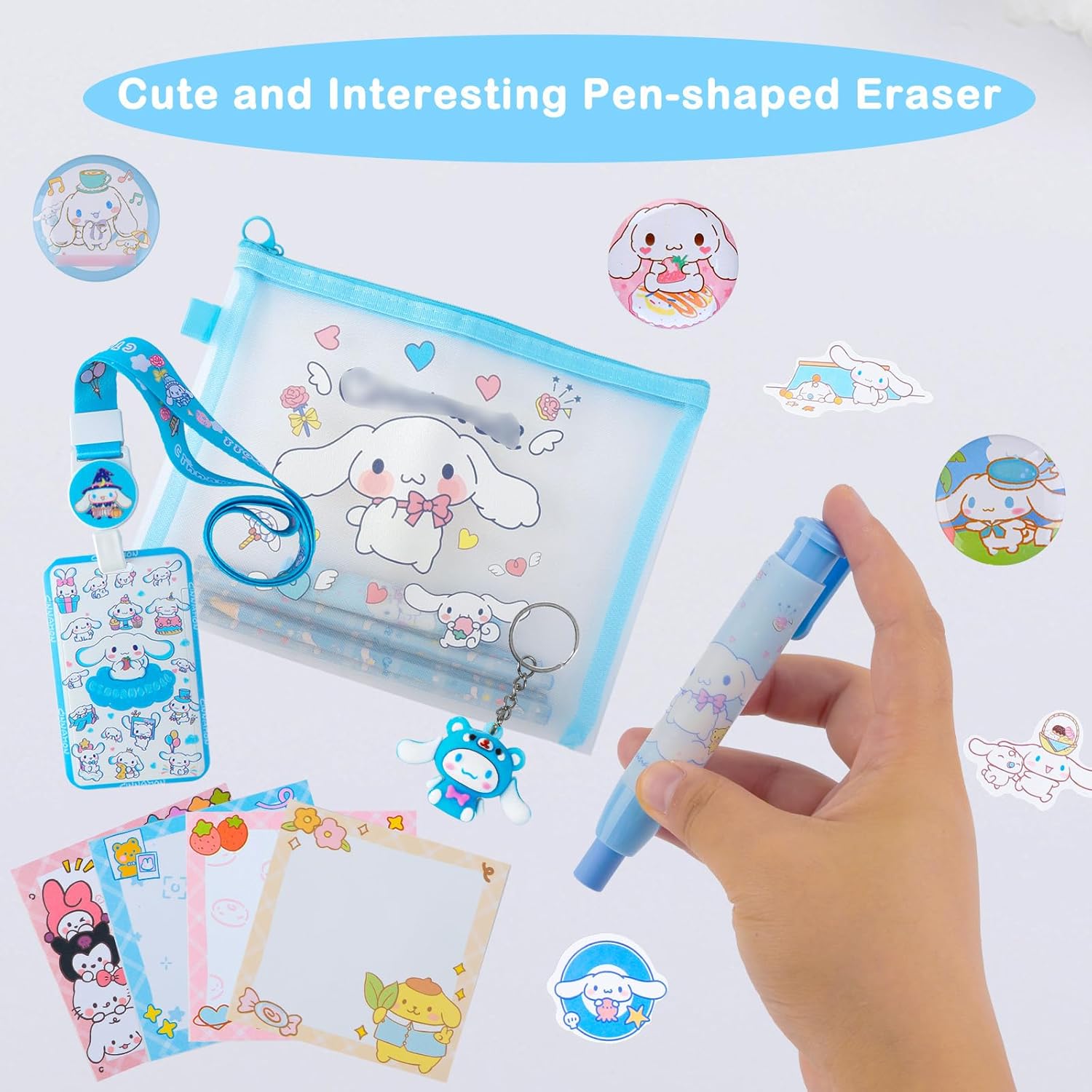
Why a Themed Set Works Better Than Random Bits
Grabbing one marker here and one pen there seems thrifty—until you discover nothing matches, lids don’t fit, and half the items get lost. A themed bundle like the Cute School Supplies Set solves three problems at once: coordinated sizing (so everything fits the pouch), consistent color language (so kids know which pen is “for headings” vs. “for corrections”), and built-in delight (so the kit feels like theirs). When your child wants to open the case, you’ve already won half the battle.
Build the Case in Zones (So Little Hands Don’t Hunt)
Structure beats chaos—especially for younger learners. Use a simple, repeatable map:
Quick-grab rail: The two everyday writing tools (HB pencil and a smooth blue/black pen). These live right inside the zipper so they’re first to hand.
Color & highlight lane: Two highlighters (one warm, one cool) and two colored pens. Reserve one color for headings and one for key terms. Consistency makes notes readable for teachers and future-you.
Fix & measure pocket: Pencil-top eraser or block eraser, mini sharpener with shavings container, 15 cm ruler, correction tape.
Sticky zone: Page flags and small sticky notes. These are gold for reading assignments (“find three facts”) and science projects (“to-do” labels on steps).
Sticker sleeve: Reward stickers from the Cute School Supplies Set go here—more on how to use them without turning homework into a bribe.
Color Coding That Actually Helps Learning
Bright colors aren’t just decoration; used well, they become a memory map.
- Headings: Always the same color (e.g., purple).
- Key words/definitions: Yellow highlight—visible but doesn’t overpower.
- Dates & page numbers: A single accent pen (e.g., teal) so kids can flip quickly.
- Corrections or teacher feedback: Red or orange only for editing—never for everyday writing.
Keep the palette tight: 2 pens + 2 highlighters is plenty. The Cute School Supplies Set gives options; you choose the four that match your child’s temperament and teacher expectations.
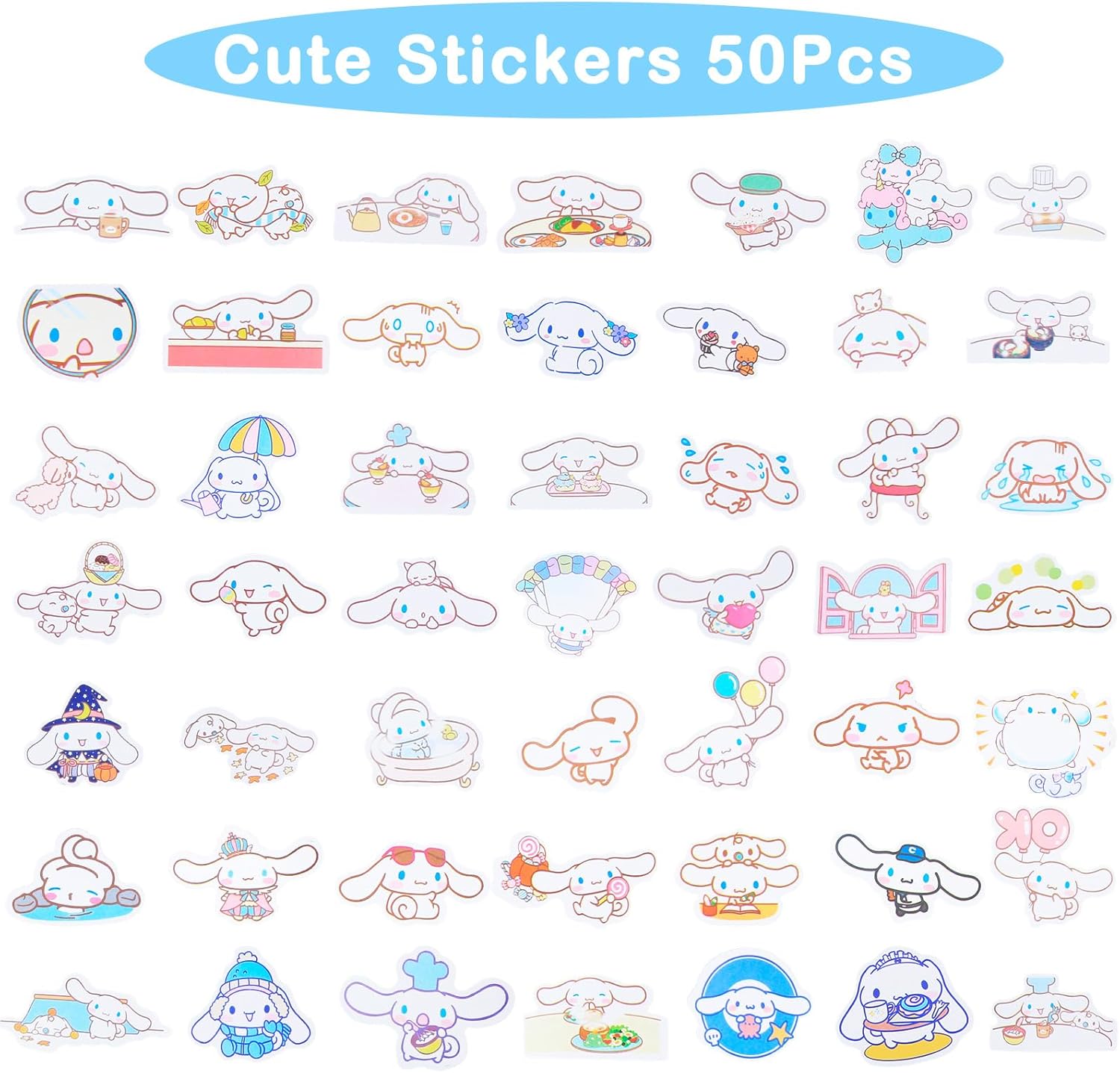
Motivation, Not Mayhem: Using Cute Elements the Smart Way
Kawaii characters and stickers can either motivate or distract. The line is ritual. Establish these rules:
- Sticker after the task, not before. One small sticker for finishing a reading log or a math sheet error-free.
- Character cameo, not takeover. Let them put one character sticker on the notebook cover and keep the rest on a reward sheet inside the pouch.
- Five-sticker exchange. Five earned stickers = one small privilege (pick the family playlist, choose the bedtime story). Keep the reward non-sugary and consistent.
This way, the Cute School Supplies Set becomes a mini progress tracker, not a distraction engine.
Age-Appropriate Loadouts (A Quick Guide)
Ages 6–8 (Lower Primary): Big-barrel pencils for grip, one triangular pencil grip if needed, block eraser, mini sharpener, 2 felt pens, 1 highlighter, sticker sleeve. Keep scissors/glue in the classroom cubby if school allows.
Ages 9–11 (Upper Primary): Slimmer pencils, 2 gel/ball pens, 2 highlighters, 15 cm ruler, correction tape (if allowed), small sticky notes, page flags, simple compass for intro geometry.
Ages 12+ (Secondary): Add fineliners for diagrams, a second ruler or protractor, USB thumb drive, and a slim calculator pocket. If teachers prefer blue ink for essays, standardize on that and keep black for graphs/labels.
The Cute School Supplies Set usually spans pen styles and accessories; curate what your school allows and store extras at home.
Homework Flow: A 10-Minute Setup That Pays All Year
- Clear the surface. A placemat or foldable desk pad signals “study time.”
- Lay out the quick-grab tools. Pencil, pen, highlighter—everything else stays in the pouch.
- Set a mini-goal. “Read two pages and highlight 3 facts.”
- Timer on. 10–15 minutes for lower primary, 20–25 for older.
- Sticker check. One earned sticker if the task was focused and tidy.
Rituals must be short and repeatable. The cuteness of the Cute School Supplies Set makes kids happy to unzip; your structure keeps the session productive.
One Hybrid Block (Bullets + Guidance): The “No-Lost-Lids” Routine
- Cap before you move. Pens and highlighters return capped—always.
- Same pocket, every time. Color pens left mesh; correction + eraser right mesh.
- Friday refresh. Quick wipe, empty shavings, restock sticky notes.
- Name everything. Tiny label on every tool; lost property boxes are chaos.
- Zip to the corners. Half-zipped = backpack glitter explosion waiting to happen.
This 90-second routine protects the Cute School Supplies Set from turning into random plastic.
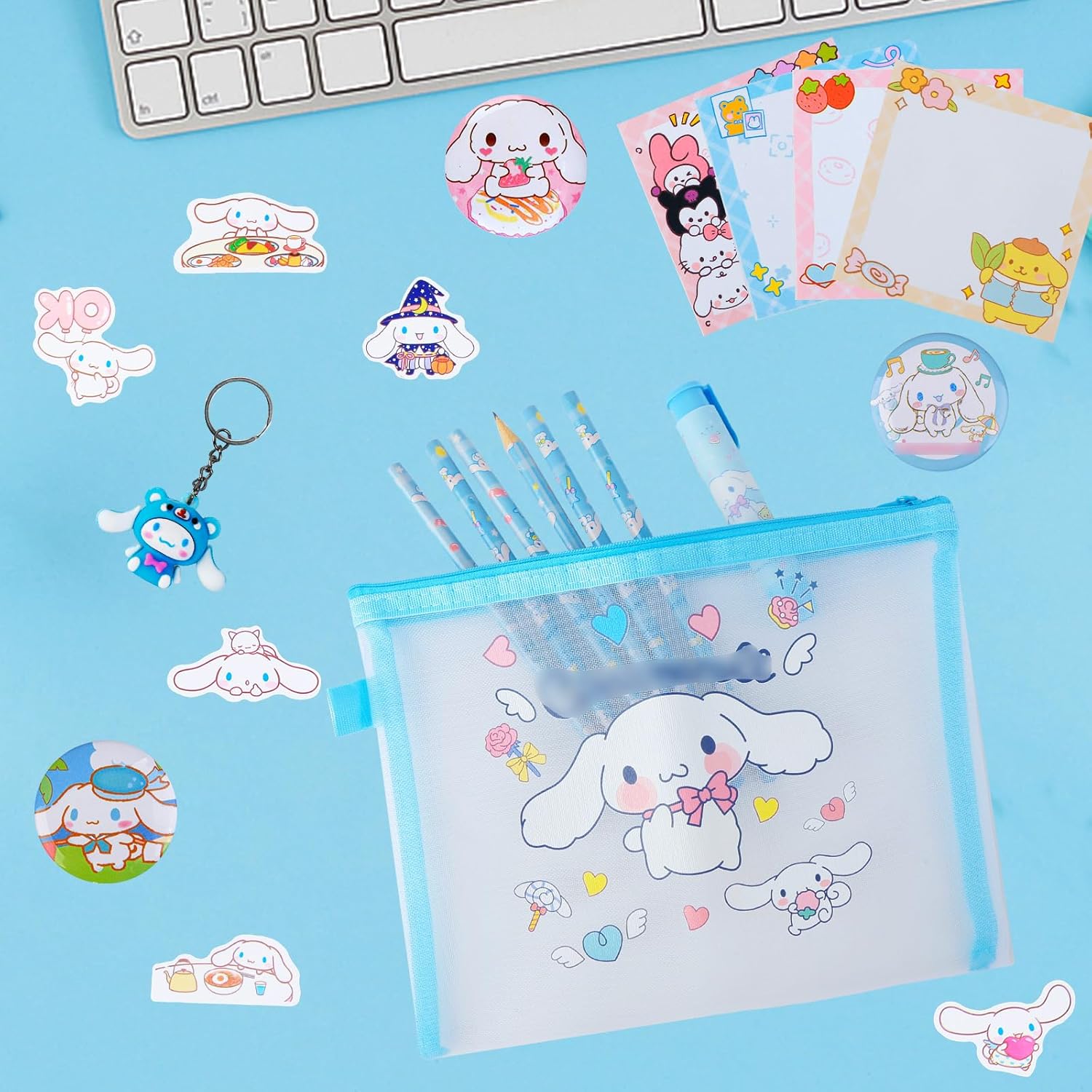
Materials & Safety: What to Check Before First Use
Look for non-toxic inks, low-odor markers, and rounded scissor tips for younger users. If your child has skin sensitivities, keep a hypoallergenic hand wipe nearby and choose pens with comfortable, latex-free grips. Teach “caps away from mouth” and “stickers on paper, not skin.” Cute shouldn’t compromise safety—and with the Cute School Supplies Set, you can vet each component on day one.
Teacher-Friendly Notes and Parent Communication
Many teachers share marking color preferences (“blue for essays, green for peer review”). Write these on a mini index card and tuck it in the pouch. If your class uses reading logs, pre-tab the current week with a page flag so your child can open directly to it. Encourage kids to add one sticky summary sentence at the end of reading—this turns supplies into a comprehension tool.
Projects & Creative Days: Add, Don’t Overhaul
For art or STEM build days, drop a slim zip folio alongside the main case: glue stick, child-safe scissors, a few washi tapes, and a small ruler. Keep the base set unchanged so Monday’s math doesn’t start with a treasure hunt. The Cute School Supplies Set stays the core; extras rotate as the calendar demands.
Budget & Refill Strategy (So You’re Not Rebuying in October)
- Stage spares at home. One extra eraser, one spare highlighter pair, pencil leads (or two pre-sharpened pencils).
- Refill dates. Add a calendar reminder every 6–8 weeks to check ink levels and sticky notes.
- Quality over novelty. If one pen type becomes a favorite, buy a small refill pack of that model only.
- Contain the glitter. If the set includes decorative items, keep them in a separate mini pouch for weekends or craft time—school kit stays functional.
Inclusion & Neurodiversity: Stationery That Supports Focus
Some kids focus better with gentle sensory inputs. Soft-grip pens, slightly heavier pencils, and matte paper tabs can help. Limit visual noise inside the case: fewer, clearer tools often beat a rainbow explosion. Use the characters from the Cute School Supplies Set as anchors (“blue bear = dates,” “pink star = definitions”) so the visual cue simplifies decision-making.
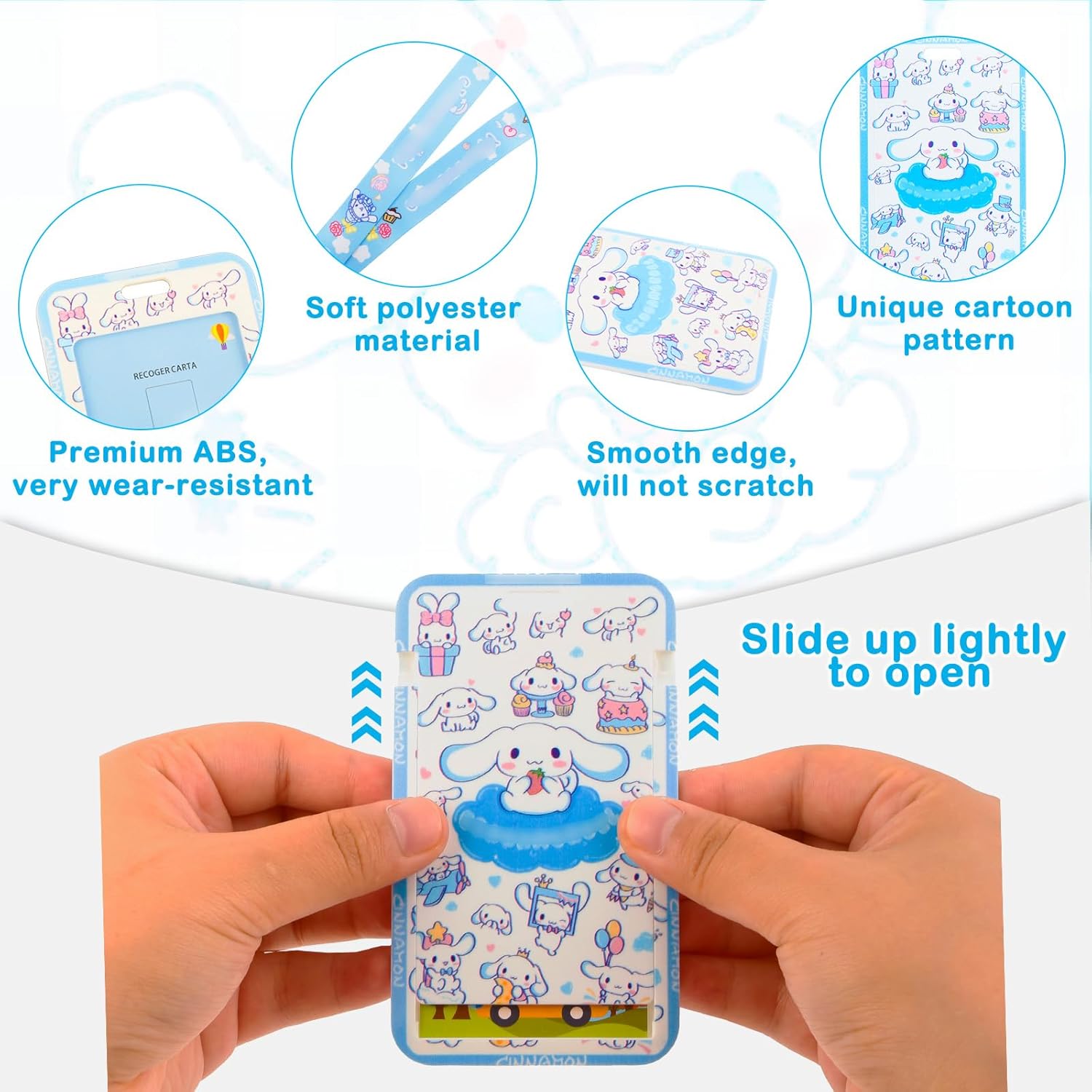
Travel & After-School Logistics
If your child moves between home, after-school club, and grandparents, keep a spare micro kit at each location: pencil, pen, highlighter, mini sticky notes. The big case travels in the backpack; the micro kit guarantees that homework can still start if the backpack took a detour.
Conclusion
Cute is the hook; structure is the habit. With a coordinated bundle like the Cute School Supplies Set, you can create a case that kids love to open and you love to maintain. Map the interior into predictable zones, standardize a tight color code, and use stickers as earned punctuation—not the whole sentence. Add a simple weekly refresh and a tiny homework ritual, and you’ve turned stationery into a study system. When tools are easy and joyful to use, kids show up for the work—and school days feel lighter for everyone.
FAQ
- How many pens and highlighters do kids really need in primary school?
Two pens and two highlighters cover 95% of tasks. Add a single colored pen for dates/titles and keep the rest at home to reduce clutter. - What’s the fastest way to keep the case organized?
Use fixed zones and practice a 90-second “cap, pocket, zip” routine after each study block. Do a Friday wipe and restock. - Are reward stickers a good idea or a distraction?
They work when tied to specific outcomes (finished reading log, tidy worksheet) and exchanged for small privileges. Avoid pre-rewarding. - My child chews pen caps—help?
Choose pens with vented, larger caps and practice “cap on, hands down” as part of the routine. Offer a silicone chew pencil topper if needed and approved by school. - Should we allow correction fluid/tape?
Follow teacher policy. If allowed, teach “one pass, then rewrite”—correction tools fix clarity, not sloppy habits. - What if the kit becomes a toy in class?
Limit in-class items to the functional core and keep decorative extras in a weekend pouch. Agree on a “school mode vs. home mode” rule. - How do we handle left-handed writers?
Pick quick-dry inks to reduce smudging, use a 15 cm ruler with a non-slip edge, and angle the page slightly counter-clockwise for comfort. - When should we upgrade tools?
After a full term of consistent use. Replace the most-used pen first with the same model; add new colors only if they serve a defined purpose.

